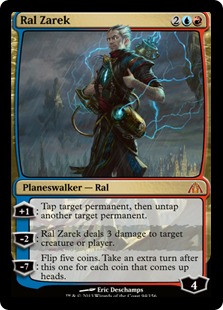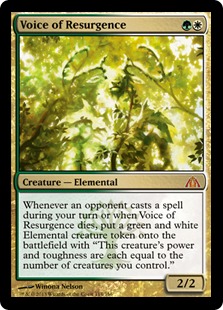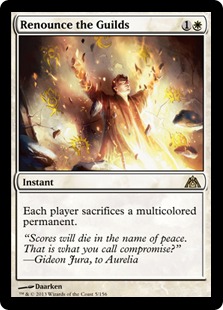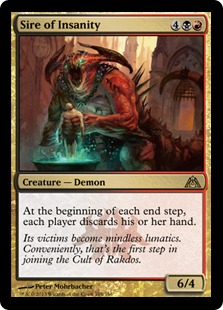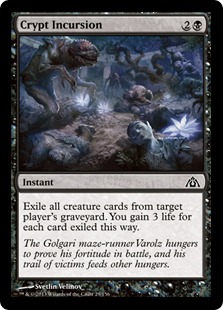“Started from the bottom and now we’re here.” –Jimmy Brooks
I don’t listen to much rap music. Thank you, Google.
Thanks for having me this week, folks. I couldn’t be happier to be here.
Now that I’m finally a part of the amazing staff here at StarCityGames.com, I look forward to carving out my own little piece of the world alongside some of the greatest minds and game theorists that that world has to offer, and doing all of it while hopefully entertaining the bejesus out of you—because I am hysterical. I think (hope).
When it comes to playing Magic, I’ve been an avid fan for the last fifteen years. Try as hard as I might to resist the pull of wizardry, I’ve been unable to break the spell this game has over me. Luckily in my home state of Florida, I’m blessed enough to experience a fair amount of tournament success that drives my desire to write and share my opinions/innovations/crackpot theories with the community. For the most part, people seem to enjoy it. Encouraging me only makes me try harder.
In my neck of the woods, I’m known as a “little bit of a brewer” as Glenn Jones put it. I love playing decks that offer multiple lines of play, are a little off the radar, and are capable of doing frighteningly powerful things.
Upon viewing the full Dragon’s Maze spoiler, my spidey senses started tingling. After making sure that I wasn’t suffering from a heart attack, I went to the drawing board and started putting together bits and pieces of existing decks with some of the new cards that might give them a lot more power than they previously had.
My first foray was with Travis Woo baby, Fog Door. As a fan of his stream, watching him pilot this deck always made me jealous that I wasn’t having the same amount of fun playing Magic as he was. I decided to cut the sleeves off of my shirt, run 46 miles, eat thirteen apples, and try to make his deck even more insane with the addition of some new cards that really get my basketballs spinning.
Creatures (2)
Planeswalkers (3)
Lands (26)
Spells (29)

If you’re familiar with Woo’s build, you’ll see some slight variations. The first and probably biggest addition is that of Ral Zarek, who if it were at all possible, I’d bottle into a cologne so that the ladies would find me more desirable. In one of the earlier incarnations of this deck, the simply named OmniDoorThragFire, taking extra turns was how it enabled itself to “go off,” so it only seemed natural that Ral Zarek, who facilitates multiple roles in this deck, would be an auto-include in the preliminary stages of testing.
His +1 ability is where things start as it interacts favorably with another new addition: Gilded Lotus. His untap ability means that not only are we able to smooth out our mana, but we’re now able to do some truly degenerate things with said Lotus. Among the top of things on that list is generating wild amounts of mana that can be parlayed into massive Sphinx’s Revelations, faster Increasing Ambitions, and a general sense that all of my spells can be cast with more ease.
Ral Zarek’s -2 ability is no slouch either. Ever Lightning Bolt something? Feels good, man! In a world filled with midrange creatures that are unable to survive three damage, his minus ability coupled with a Fog means that you are allowed to kill one of their creatures or planeswalker while still protecting your investment.
All aboard the train to Value Town. Choo-choo!
When he gets to his ultimate, though, that’s when things get interesting. Patrick Chapin provided an excellent table of the percentages of Ral Zarek’s extra turn probabilities here, and the results are too much to ignore. In a deck that generates incremental advantage turn after turn with cards like Urban Evolution, Farseek, and Increasing Ambition, taking two-to-three extra turns can seal up a game very quickly against an opponent who is likely too far behind to ever hope of catching up. And if you decide to keep Ral Zarek around before you ultimate him, those extra turns will go towards ticking him up for even more turns!
The sideboard features all the usual suspects except that now we have access to Reap Intellect, which frankly seems terrifying to play against if you’re a control or midrange deck. For five mana, you get Lobotomy, which is reasonable. For six mana, double Lobotomy! For seven mana? An opponent that is quick to pack things up. This card is for when you absolutely, positively want to demoralize the mage sitting across from you.
There’s so much awesome here that it’s not hard to see why a deck like this could be a serious contender for your next upcoming PTQ or SCG Open event.
Up next on our buffet of delicious decks is a new take on the classic W/G hate bears archetype.
Voice of Resurgence has a lot of people excited, and with good reason.
“End of turn, I’ll Think Twice.”
“Restoration Angel in response to attacks.”
“Supreme Verdict.”
What do all of those sentences have in common? They all end in you saying “LOL K!” afterward.
Voice of Resurgence adds a very interesting dimension of Magic that we haven’t seen in a long time. No longer can your opponent just start jamming instants without ramifications, and as a control player I can’t stand that. When I sat down to write up this list, I thought to myself, “What kind of deck would you hate to play against?”
I really, really hate myself.
Creatures (29)
- 4 Champion of the Parish
- 4 Avacyn's Pilgrim
- 4 Mayor of Avabruck
- 4 Thalia, Guardian of Thraben
- 4 Silverblade Paladin
- 1 Sublime Archangel
- 4 Loxodon Smiter
- 4 Voice of Resurgence
Lands (24)
Spells (7)

Step back into the TARDIS with me and we’ll venture back to a place when Sam Black was crushing tournaments with his incarnation of W/G Humans.
His take on the hate bears archetype was very elegant at the time. Traditionally, hate bears generates a spot in the metagame by playing multiple “Grizzly Bears.” These cheap, two casting cost creatures usually have an added effect that either hinders or deeply affects the game plan of your opponent. In W/G Humans’ case, playing fast and efficient cards backed up by one of the greatest haters of our time (not Silky Johnson, either), Thalia, Guardian of Thraben, was usually enough to set your opponent back a turn or two, which let your much faster clock kill them quickly. All was well in the world—that is until a very effective version of Bant Control started gaining steam. Many thanks to Reid Duke for screwing it up for the rest of us!
The combination of early removal, Supreme Verdict, Thragtusk, and Restoration Angel was tough for G/W Humans to beat. To combat a poor matchup as well, B/R Aggro decks began playing maindeck Pillar of Flame. All of this meant that W/G Humans was forced almost completely out of the format.
Until now!
Voice of Resurgence is a game-changer. I might be new here, but I will go on record saying this card will see a ton of play in most formats. Yes, it does tons of cute things against control that we can already identify. Turning their instants and Restoration Angels practically into sorceries and 3/4 fliers for four lest they help you churn out larger Elementals is only the beginning. Sometimes the surface belies a more freakish interior.
Voice of Resurgence has the ability to completely blow apart aggro mirrors. As just a simple 2/2, it is able to block the majority of cards played by G/R, Naya, and Jund Aggro decks. Where it breaks parity is the creature it leaves behind. If you’re both sitting at an equal number of creatures, your Voice of Resurgence will always win at combat by replacing itself with a bigger creature some of the time. That kind of upside is absurd and puts you directly in the driver’s seat since no longer can they just jam their team into yours without fear of repercussion.
Basically, if they aren’t playing with Voice of Resurgence, they are at a huge disadvantage to you if you both are anywhere near equilibrium, and that’s power you cannot ignore. I honestly can’t think of a single matchup where this card is bad. Yes, Pillar of Flame and Terminus are answers to it, but aside from that your opponent is in serious trouble if they try to go toe-to-toe with this new hate bear. In multiples, it becomes insane.
The sideboard is standard fare. Garruk Relentless is a most excellent dual contributor, providing removal and bodies against creature-heavy decks and midrange matches while being a must-answer threat against most control decks. Nevermore is your insurance plan against Sphinx’s Revelation, Supreme Verdict, Thragtusk, or Terminus. But Renounce the Guilds is one that I truly adore.
What are some cards this deck has a lot of trouble with?
Obzedat, Ghost Council
Boros Reckoner
Olivia Voldaren
What are some cards that Renounce the Guilds can very easily deal with?
Obzedat, Ghost Council
Boros Reckoner
Olivia Voldaren
I usually don’t like being reactive with an aggro deck, but the importance of getting those cards off the table outweighs my concerns, not to mention it has a neat little interaction with Voice of Resurgence if you happen to have it in play.
Like my good buddy Chris Fennell says, in the vacuum of a new format, sometimes you just want to be the deck attacking and killing your opponent while they try to have fun with their new cards.
I still have a little gas left in the tank, so I’d like to switch gears from an aggressive build to a midrange deck with lots of interesting synergies.
Submitted for the approval of the SCG Society, I call this one R/W/B Good Stuff.
Creatures (10)
Planeswalkers (4)
Lands (25)
Spells (21)

Sire of Insanity. The very name gives me chills because I know at some point I’m going to put it into play and my opponent is going to look at their hand, then back at me, then at their hand again, and when I say go they’re going to place all of it in their graveyard.
We’ve seen the applications that Sire can have in decks like Dark Naya and Jund since Brad Nelson, Gerry Thompson, and others have done a ridiculous job chronicling that on our Versus videos (my personal favorite to watch every week.) Where R/W/B Good Stuff diverges from their path is that it does a very good impression of being a Boros Reckoner + Blasphemous Act deck while simultaneously striking at the metagame from a very awkward angle.
While decks like Junk Reanimator are content with filling their graveyard in hopes of landing that game-winning Unburial Rites on a fatty, R/W/B Good Stuff doesn’t mind having that plan as a part of disrupting the opponent while building up a steady board position. The thing with this deck is there is no Plan A or Plan B. You simply go with the flow of your hand and have multiple avenues to win the game, all of which are very efficient! How many decks can boast a multi-pronged strategy that is good in several different ways?
First, Liliana of the Veil has the potential to be a game-breaking card, and this deck abuses her by playing a plethora of cards with flashback, which lets you run your opponent out of cards while maintaining your stock via the graveyard. Sire of Insanity is the frosting on top of a truly butt-ugly cupcake. You wonder why the Internet can’t stop gushing about this guy…girl…thing. I don’t know. But let me tell you, when you cast it it’s like chewing Five-Alarm Gum.
When you reanimate the Sire with this deck on turn 4, however, you have the ability to end the game in a much different way than Jund or Dark Naya. Instead of casting it and saying “all-in,” your discards yield a ton of options through flashback. If stuck in a topdeck war and an opponent is able to kill off your Sire of Insanity, with the other decks you are left in a very, very deep hole. With R/W/B Good Stuff, you have tons of options if they somehow manage to deal with Sire, which is the difference between winning with ease and losing a close game.
In several games of testing where my Sire of Insanity was killed off on the back of a good draw from the person I was playing against, I was able to jettison myself in the game much faster with cards like Faithless Looting, Lingering Souls, and Unburial Rites. You put them in a position where they have to have multiple good draws in a row as opposed to just one or two or they will succumb very speedily to your overall card quality, which might I add is very high (thanks for that Obzedat!).
The sideboard gives a diverse amount of power depending on the matchup you’re playing. Master of Cruelties might be the most interesting card since your opponent will have to respect the fact that you play cards like Searing Spear and Pillar of Flame and can just outright end the game. I think Master of Cruelties is a card that looks strange on the surface, but delving deeper into his power is key in evaluating him. At best, he stalls all of your opponent’s attacks with first strike and deathtouch while acting as The Abyss against them whenever you decide to turn him sideways.
Cards like Purify the Grave play into our discarding strategy since we gain double the value out of having it in our hand or discarding it to hinder our opponent. Crypt Incursion feels perfect in this kind of deck since it can completely remove all of their creature-based threats in the graveyard for a low cost and a great upside. The rest of the cards that fill out our board are all matchup dependent but seem very powerful in their own right. Olivia Voldaren packs a huge punch against some decks, Tragic Slip is our answer to Falkenrath Aristocrat, and the rest of the cards just reinforce our removal package or give us even more threats in the case of Angel of Serenity.
…
…
…
Whew! We went pretty deep there together.
I hope you had as much fun reading this as I had fun writing it.
This new chapter in my life with StarCityGames.com is sure to yield some pretty interesting results. I hope you choose to ride it out with me, and let’s make however long I’m here as much fun as possible. I will never be intimidated by the challenge. Instead, I hope to be motivated by it.
A smart person told me that.
I hope you’re all excited. I know I am!
Catch ya on the flip–
Mark
 |
I am Dimir. There is no better joy in life than getting what you want. With House Dimir, we always get what we desire, and no length is too great in order to obtain it. You don’t even want to know how I got my cat, Bynx. Let’s just say it’ll always be my…little secret. |

